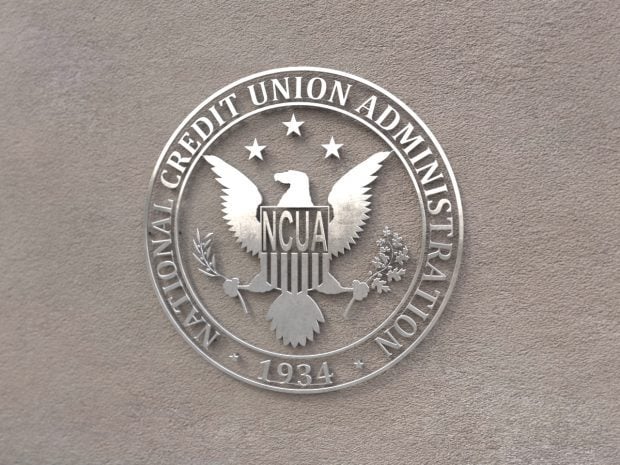Earlier this month, Eastern Corporate Federal Credit Union discreetly completed a $17.7 million Perpetual Paid-In Capital II subscription offer, converting $11.8 million of existing member capital to PIC II and raising $5.9 million of additional funds. EasCorp will add the GAAP-recognized amount to its key capital ratios, raising core capital to 4.07% and increasing total capital to 5.65% as of June 1.
How did the $1.3 billion corporate convince members to recapitalize their cooperative in tough times when even the NCUA is using last November's corporate capital ratios to regulate?
Frequent communication with elected officials and members was key, said CEO/President Jane Melchionda.
For the past 18 months, as markets have deteriorated, EasCorp's management, board and supervisory committee have attended monthly board meetings together and have met more frequently to discuss increasingly difficult market issues as they arise. When U.S. Central announced $1.2 billion in losses in January, prompting an NCUA bailout, EasCorp considered a worst-case total loss scenario at U.S. Central and realized capital would need to be addressed.
The Burlington, Mass.-based corporate immediately began meeting with member credit unions, beginning with key accounts first, advising them of the situation. Eventually, EasCorp asked members to invest in PIC II on a voluntary basis, Melchionda said.
Volunteers were particularly supportive of the effort, she said, attending member meetings along with management.
John Young, president/CEO of the $250 million New Hampshire Federal Credit Union, was elected to a director's position in 2008 after seven years on EasCorp's supervisory committee, including a turn as committee chair.
“Up until that meeting with members who had significant EasCorp business relationships, I don't think that this possibility [of PIC II] was on the elected officials' or even management's radar screen,” Young said. “Understanding the state of the financial industry, it was not a consideration that was talked about much or honestly even considered in the context of capital accumulation. I think this is where the PIC II offering took on significant interest as a way to shore up what could be a very difficult situation.”
Young said all board members agreed to keep lines of communication open, and the group expected regular updates and periodic meetings as strategies developed. Additionally, they agreed members would play a significant role in the development of any solution.
Once the offering was announced, EasCorp hosted regional meetings to give members the opportunity to have face-to-face communications with elected officials and management, so they could better understand the offer, including the benefit and risks of transferring MCA to PIC II.
The corporate didn't ask for the $6 million it received in new money. Instead, Melchionda said EasCorp asked members to transfer existing three-year notice deposits, which don't count toward capital under GAAP standards, into GAAP-approved PIC. Credit unions offered the new money on their own, she said.
Young said the meetings confirmed for him that EasCorp had exercised prudent behavior and had stayed true to its mission of supporting members, who in turn rewarded the corporate with capital.
“I know that this partnership has only strengthened from this struggle that we are working through. There has been an elevated appreciation for each other in this partnership that has grown from these events,” he said.
EasCorp's CEO said she doesn't want volunteers or members to ever be surprised when it comes to their corporate.
Members have told her they don't like it when the press uncovers corporate news, “especially under today's circumstances,” so EasCorp maintains a strict policy of notifying members of all good and bad news before going public.
“In the early stages, as things began to unfold in the economy, there was a general lack of concrete information about what was happening in the markets and its impact on U.S. Central,” Young said. “So, we had competing concerns in getting accurate information out to the membership while at the same time not contributing to the high level of rumors or supposition.”
Once corporate losses had the potential to trickle down to members, the corporate started sending regular memos to members to keep them updated on evolving corporate issues. Members found the memos helpful when explaining issues to their boards.
Though EasCorp has experienced losses related to U.S. Central, it hasn't recorded OTTIs on its own investments, thanks to a simple business model that values liquidity and safety over yield, said Melchionda. “We're a major player in New England for financial settlements, so our strategy has been built around maintaining liquidity,” she said. “When we were chartered in '78, we only applied for base plus corporate authority, and we've stayed with that.”
EasCorp capped mandatory member contributed capital at $500,000, setting a fixed balance sheet size and never attempting to grow beyond it.
“People look at asset size as a way to measure corporates, but we wanted to diversify our business, and instead of relying on spread income, we wanted to offset our expenses with fee income,” she said.
Young credited EasCorp's balance sheet success to its proprietary operating system technology, which allows it the freedom to develop its own products at price points considerably lower than the competition.
“This has enabled EasCorp to derive healthy fee income for its investment while at the same time putting EasCorp's members in a very advantageous competitive position,” Young said. Proprietary strategies and strong balance-sheet management freed EasCorp from financial pressures that dictate “an imbalance relative to risk and reward,” he added.
“For example, a matched balance sheet and investment portfolio did not create a need to 'grow assets for the sake of growth.' The ability to grow the balance sheet organically and derive income from fee generation eliminated, for the most part, the pressure to capture unrewarded yield. This kept the organization focused on liquidity that EasCorp's significant daily settlements required, not on spreads,” Young said.
–[email protected]
© Touchpoint Markets, All Rights Reserved. Request academic re-use from www.copyright.com. All other uses, submit a request to [email protected]. For more inforrmation visit Asset & Logo Licensing.






